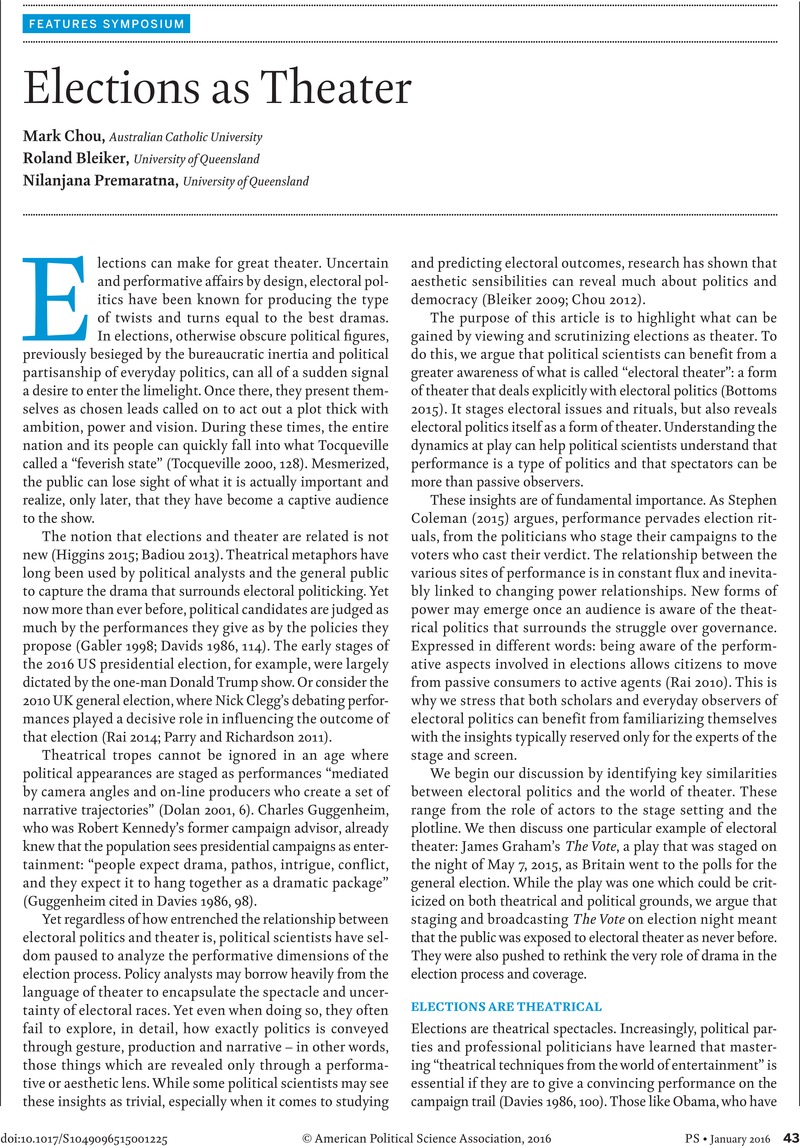Crossref Citations
This article has been cited by the following publications. This list is generated based on data provided by Crossref.
Mitchell, Charles L.
2016.
Does Changing Media Reality Likely Affect the Election of 2016?.
SSRN Electronic Journal,
Hooghe, Marc
and
Stiers, Dieter
2016.
Elections as a democratic linkage mechanism: How elections boost political trust in a proportional system.
Electoral Studies,
Vol. 44,
Issue. ,
p.
46.
Silber, Ilana
2018.
Le don comme « jeu profond ». Note sur la dramaturgie du don public et ses paradoxes.
Revue du MAUSS,
Vol. n° 52,
Issue. 2,
p.
108.
Ahmadov, Anar K.
2019.
Breaking the fourth wall in political studies: exploring politics through interactive theatre.
European Political Science,
Vol. 18,
Issue. 3,
p.
554.
Hodson, Dermot
2021.
The visual politics and policy of Donald Trump.
Policy Studies,
Vol. 42,
Issue. 5-6,
p.
509.





